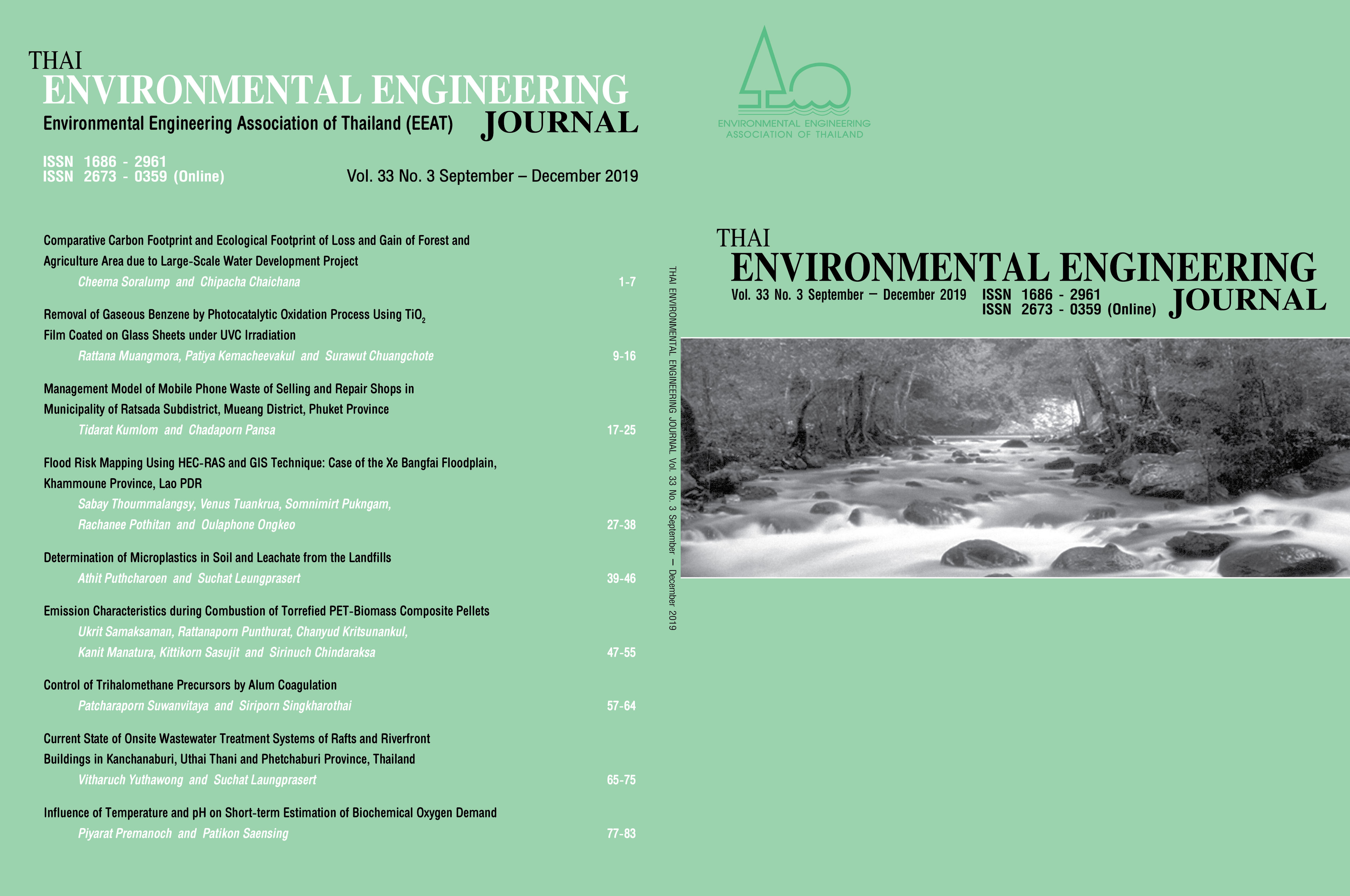Comparative Carbon Footprint and Ecological Footprint of Loss and Gain of Forest and Agriculture Area due to Large-Scale Water Development Project
Main Article Content
Abstract
Quantitative evaluation of environmental loss and gain of forest and agriculture area were analyzed from the large-scale water development project in Thailand, The Increasing Volume of Water of Mae Kuang Project. It was found that after the project was completed, forest land will be increased and remove carbon dioxide in the atmosphere for about 7,106 tCO2e. Ecological footprints in forest areas found footprints in the uptake of carbon dioxide from the reforestation areas have increased for about 1,476 haG. Agriculture land will be increased and remove carbon dioxide in the atmosphere for about 42,087 tCO2e. Ecological footprints in the uptake of carbon dioxide from the agriculture areas have increased for about 2,834 haG. In terms of ecological footprints, about 4 and 11.27 times better use of land due to more forest area and better irrigation. From this study, it was found that footprints in forest and agriculture areas have a more positive impact than a negative impact. If construction is completed with better water management and able to deliver water to irrigation areas which helps increase the chances of absorbing more carbon dioxide from plants that can be cultivated throughout the year.
Article Details
References
[2] Royal Irrigation Department, 2011, Environmental Impact Assessment: Increasing Water Volume in Mae Kuang Udom Tara Project, Chiang Mai Province, https://eiadoc.onep.go.th/eialibrary/5water/52/Maekuangdam.pdf. June 16, 2018 (in Thai).
[3] Royal Irrigation Department, 2008, Procedure on Water Project Development, https://lproject.rid.go.th/med/site/images/samldata/construction%20handbook/develop.pdf. June 16, 2018 (in Thai).
[4] Goslee, K., S. Brown and F. Casarim, 2014, Forest Carbon Monitoring System: Emission Factors and their Uncertainties, Version 2, June 2014. Submitted by Winrock International to the Guyana Forestry Commission.
[5] Royal Forest Department, 2011, Manual for Plant CO2 Uptake Potential under Clean Development Mechanism (in Thai).
[6] Wackernagel, M., C. Monfreda, D. Moran, P. Wermer, S. Goldfinger, and D. Deumling, 2005, National Footprint and Biocapacity Accounts 2005: The underlying calculation method.
[7] Venetoulis J. and J. Talberth, 2008, Refining the Ecological Footprint. Environ Dev Sustain, 10, 441-469. Sustainability Indicators Program, Oakland USA.
[8] Ewing, B., D. M. Goldfinger, S. Oursler, A. A. Reed, M. Wackernagel, 2010, Ecological Footprint Atlas 2010. Global Footprint Network, Oakland, USA.
[9] Royal Forest Department, 2008, Reducing Emission from Deforestation and Forest Degradation in the Tenasserim Biodiversity Corridor and National Capacity Building for Benchmarking and Monitoring, Department of National Park, Wildlife and Plant Conservation and Royal Forest Department.
[10] Chunya Kuntawongwan, 2011, Ecological Footprint Analysis of Frozen Okra Production, Master thesis, Chiangmai University, Thailand (in Thai).
[11] Food and Agriculture Organization of the United Nations, 2019, FAOSTAT, https://www.fao.org/faostat/en/#data/QC.
[12] Department of National Parks, Wildlife and Plant Conservation, 2011, Operation Guideline for Forest Rehabilitation in Reserved Area https://www.dnp.go.th/ mfcd13/report/แนวทางการฟื้นฟูและการปลูกหวาย.pdf (in Thai).


